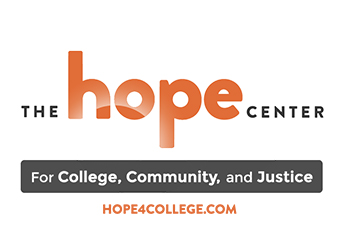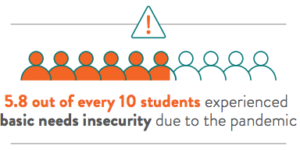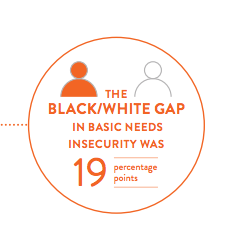 Before the coronavirus pandemic, nearly 37 million people struggled with hunger in America, according to Feeding America. Now, more than 54 million Americans are projected to face hunger this year. Many of these newly hungry Americans include the millions left without a job after COVID-19. But they also include college students, who struggled to meet their basic needs when universities and colleges across America shut down.
Before the coronavirus pandemic, nearly 37 million people struggled with hunger in America, according to Feeding America. Now, more than 54 million Americans are projected to face hunger this year. Many of these newly hungry Americans include the millions left without a job after COVID-19. But they also include college students, who struggled to meet their basic needs when universities and colleges across America shut down.
When hundreds of universities across the nation moved online in mid-March 2020, many students lost access to campus-provided food and housing, along with crucial resources such as campus jobs and food banks.
A June 2020 report from the HOPE Center for College, Community and Justice at Temple University on the impact of COVID-19 on college students’ well-being reveals more than half of college students struggled to meet their basic needs during the early days of the pandemic.
With more than 38,000 students responding to an online survey from April 20 to May 15, the report highlights how the pandemic has exacerbated housing and food insecurity for college students. Respondents came from 54 institutions including two in Florida, Broward College and Lake-Sumter State College.
Nearly 3 in 5 students struggle to meet their basic needs
 Pre-pandemic, the American Association of Collegiate Registrars and Admissions Officers identified food and housing insecurity as a top barrier to student non-completion. This suggests millions of students may not have completed their degree because they lacked healthy meals and a stable home. These problems were intensified by the pandemic, when thousands of students were told to leave campus and go home, and food and housing insecurity increased.
Pre-pandemic, the American Association of Collegiate Registrars and Admissions Officers identified food and housing insecurity as a top barrier to student non-completion. This suggests millions of students may not have completed their degree because they lacked healthy meals and a stable home. These problems were intensified by the pandemic, when thousands of students were told to leave campus and go home, and food and housing insecurity increased.
Although some parts of the CARES Act passed in March helped students, such as the suspension of payments and interest on federal student loans, the majority of emergency funds for college students had not been distributed in April or May. Further, many dependent college students under the age of 24 were excluded from stimulus funds.
The HOPE Center uses the umbrella term “basic needs insecurity” to include food insecurity, housing insecurity, and homelessness. All three increased during the pandemic. According to the report,
Basic needs insecurity exacerbated disparities among racial and ethnic minorities
According to the CDC, the coronavirus enacts a “disproportionate burden of illness and death among racial and ethnic minority groups.”
 The HOPE Center report details that minority students further experienced basic needs insecurity at a higher rate than white students. About half of white students experienced basic needs insecurity, while other groups, including Latinx, students, all experienced much higher rates of basic needs insecurity. Strikingly, the black-white gap for basic needs insecurity was 19 percentage points. This suggests that beyond the disproportionate effects of the pandemic on minority populations, and in particular, black Americans, these groups face higher basic needs insecurity and thus have a reduced chance for graduation.
The HOPE Center report details that minority students further experienced basic needs insecurity at a higher rate than white students. About half of white students experienced basic needs insecurity, while other groups, including Latinx, students, all experienced much higher rates of basic needs insecurity. Strikingly, the black-white gap for basic needs insecurity was 19 percentage points. This suggests that beyond the disproportionate effects of the pandemic on minority populations, and in particular, black Americans, these groups face higher basic needs insecurity and thus have a reduced chance for graduation.
There are a large number of students in need, and many are not aware of or using the resources available to them
With so many students in need, colleges and universities, as well as state and local governments and private philanthropies, rushed to provide emergency aid. However, the report finds most students did not apply for support because they did not know they were eligible to do so. For example, only 15% of students experiencing basic needs insecurity applied for Supplemental Nutrition Assistance Program (SNAP) benefits during the pandemic. 60% of students said they did not think they were eligible for SNAP, and the rest said they did not know the program existed (13%) or they did not know how to apply (12%). However, the report notes that many of these students could have been eligible for benefits if they applied.
Similarly, during the pandemic, 15% said that they applied for emergency aid at their institution, while one third of students did not know that emergency aid might be available. In addition, 19% of students said that they did not know how to apply for emergency aid. This means that universities may have had resources for students, but may have had difficulty communicating to students what emergency supports were available.
Importantly, the HOPE Center notes that responding to this survey required access to the internet. Students without a home, basic needs security, or stable internet are less likely to have even responded to this survey, potentially producing conservative estimates.
Even before the pandemic, 83% of Florida college students relied on federal, state, and institutional financial aid. As colleges and universities continue to disburse aid and consider how they will support struggling students in the fall, the HOPE Center report details that to close the opportunity gap for Florida students, students need more support in understanding who is eligible for aid and how they can receive it.
The HOPE Center has put together resources for institutions and communities to maximize CARES Act dollars.
RELATED ARTICLES:
Visit FCAN’s COVID-19 Resources and Information section
How the CARES Act can help Florida college students and education institutions
